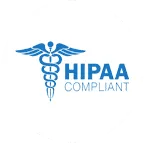The medical billing regulatory landscape is always changing. Staying current with the latest nephrology billing compliance and regulations is essential for any nephrology practice. This guide offers a detailed overview of the updates that impact how nephrology services are documented and billed.
Furthermore, it provides a concise summary of the new standards, designed to help your nephrology practice stay compliant, avoid common billing errors, and maintain better financial health.
Ensuring Compliance With Medicare Guidelines for Nephrology Billing
Effective Nephrology billing relies on Medicare guidelines that have specific rules for successful reimbursement. In order to ensure that your billing practices are compliant with regulations, follow these 3 tips below:
1. Stay up to Date With the Medicare Policy Changes
It’s important to stay informed about recent changes in Medicare policies. Regularly consulting the Centers for Medicare & Medicaid Services (CMS) website can help you keep up with these changes. You may also subscribe to the relevant newsletters on the CMS website.
2. Meet Documentation Requirements
Proper documentation is a must for compliance in nephrology medical billing. Medicare requires detailed patient records that justify the necessity of each service billed. This includes diagnosis codes that match the treatment provided and clear notes on the patient’s condition and treatment plan.
3. Apply Correct Nephrology Billing Codes
It’s crucial to use the most current and accurate ICD-10 and CPT codes. Errors in coding can lead to claim rejections or denials, affecting your practice’s revenue cycle. Training for staff on regular coding updates and conducting periodic audits can improve accuracy and compliance.
Accurate Icd-10 and Cpt Coding in Nephrology Billing Compliance
Accurate ICD-10 and CPT coding are fundamental to nephrology billing, ensuring a detailed and precise description of patient diagnoses. This level of detail is particularly crucial in a specialized field such as nephrology. To ensure effective billing, a deep understanding of commonly used codes and the strategies for their application is required.
One of the key strategies involves getting familiar with codes that are specific to nephrology. For instance, codes related to chronic kidney disease stages or dialysis treatments are frequently used and must be applied correctly to accurately represent the services provided. It is also essential to note the importance of specificity when choosing the codes, as this ensures the services are described precisely.
Most Common Nephrology Billing Codes
| CPT Codes | Description |
|---|---|
| 90960 | End-stage renal disease (ESRD) related services for dialysis less than a full month, for patients 20 years and older; 4 visits or more per month. |
| 90961 | ESRD-related services for dialysis less than a full month, for patients 20 years and older; 2-3 visits per month. |
| 90962 | ESRD-related services for dialysis less than a full month, for patients 20 years and older; 1 visit per month. |
| 90966 | ESRD-related services for home dialysis per full month, for patients 20 years and older. |
| 90967 | ESRD related services for home dialysis per full month, for patients under 2 years of age. |
| 90968 | ESRD-related services for home dialysis per full month, for patients 2-11 years of age. |
| 90969 | ESRD-related services for home dialysis per full month, for patients 12-19 years of age. |
| 90970 | ESRD-related services for dialysis per full month, for patients 20 years and older. |
| 90989 | Dialysis training complete, any mode (hemodialysis, peritoneal dialysis, continuous renal replacement therapy), for a patient, per session. |
| 90993 | Education programs for patient home hemodialysis or peritoneal dialysis. |
| 90997 | Hemodialysis services require additional medical supervision and care planning. |
| 99221 | Initial hospital care, per day, for the evaluation and management of a patient. |
| 99223 | Initial hospital care, per day, for the evaluation and management of a patient which requires complex medical decision-making. |
| 93784 | Ambulatory blood pressure monitoring, including recording, scanning analysis, interpretation, and report. |
| 36245 | Selective catheter placement, arterial system; each first-order abdominal, pelvic, or lower extremity artery branch. |
| 75716 | Angiography, extremities, bilateral, radiological supervision and interpretation. |
| 82042 | Albumin; quantitative, 24-hour collection or timed specimen. |
For a comprehensive list and descriptions of the CPT codes, checking the current year’s CPT code book or the American Medical Association’s resources would be essential as codes and descriptions can be updated annually.
It is to be noted that medical coding is not a static field. It evolves with the advancement of medical science and changes in healthcare regulations. Therefore, regular training and updates are vital for billing staff. Staying informed about the latest coding conventions and guidelines allows for the correct application of ICD-10 and CPT codes. Training ensures that billing staff are capable of accurately coding the services provided, which is crucial for the financial sustainability of any nephrology practice.
By adhering to these coding practices, nephrology practices can enhance their billing processes, leading to a better representation of services and better reimbursement.
Nephrology Documentation Requirements for Accurate Coding
To ensure accurate billing and avoid issues with insurance claims, your nephrology practice must maintain detailed and precise documentation. This documentation should cover various aspects of patient care and diagnosis, including but not limited to:

1. Initial Diagnosis and Care Plan
These documents should detail the initial diagnosis, the beginning of treatment, and the initial plan of care, establishing a baseline for the patient’s condition.
2. Details on the Affected Side (Laterality) and Specific Location (Site Specificity)
Documentation should clearly state which side of the body is affected (left, right, bilateral) and specify the exact location or site of the condition. This is crucial for conditions that can occur on one or both sides of the body, like kidney issues.
3. Records Indicating the Severity of the Condition
Records must indicate the severity of the patient’s condition. This is particularly important for progressive diseases like chronic kidney disease, where the treatment and billing codes may vary based on the disease stage.
4. Use of Specified and Unspecified Combination Codes
Use combination codes when a single condition involves multiple components or when there’s a primary condition with secondary manifestations. Ensure clarity between specified conditions (where the diagnosis is clear) and unspecified conditions (where the diagnosis is not fully determined).
5. Documentation of Underlying Causes (Etiology) and Observable Conditions (Manifestation).
When a condition is a result of another underlying issue, documentation should cover both the manifestation (the observable condition) and the etiology (the underlying cause).
6. Notes on Any Complicating or Aggravating Conditions.
If there are complications or additional conditions that can aggravate the patient’s primary condition, these should be thoroughly documented.
Additional Considerations for Nephrology Billing Compliance
Each billed service must be supported by documentation that describes the service performed, the reason for the service, and its relevance to the patient’s current health condition.
Utilize Additional Coding and Modifiers
If a single code does not fully capture the patient’s diagnosis, use additional codes or modifiers to provide a more complete picture. This is especially relevant for patients with multiple symptoms or related conditions.
Avoid Overcoding for Unspecified Visits
While it’s important to use detailed codes, avoid using an excessive number of codes for a single visit, especially if the visit is for a general or unspecified issue.
Audit Preparedness
Keeping documentation organized and readily accessible ensures that your practice is prepared for any audits by Medicare or other payers. Regular internal audits can also help identify and rectify documentation shortcomings before they become problematic.
Also Read: Difference Between Nephrology and Urology Billing.
Conclusion – Nephrology Billing Done Right
Maintaining compliance in nephrology billing is a continuous process that requires diligence, accurate coding, and thorough documentation. By implementing the strategies outlined in this guide, your practice can enhance its billing processes, leading to better financial health and allowing you to concentrate on providing excellent patient care.






